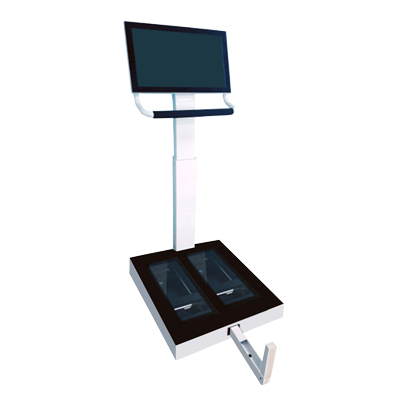Popular Searches:foot scanner | 3D scanner | 3D Printer | Design Software |


Tel :0755-86131192 86180201
Fax :0755-86180213
E-mail: [email protected]
Website: gift0755.cn
Address: 3A05, Minzhi Chamber of Commerce Building, Minzhi Avenue, Longhua District, Shenzhen
Are you here: Home > News > Industry NewsIndustry News
How does a foot 3D scanner assist flatfoot patients in evaluating foot health?
Time:2025-01-21 14:07:10Source:深圳市精易迅科技有限公司Views:51
How a Foot 3D Scanner Assists Flatfoot Patients in Evaluating Foot Health
Foot health plays a vital role in the overall functionality of the human body. For flatfoot patients, accurately assessing foot health is a crucial step in designing effective intervention and correction plans. Traditional methods of foot health assessment often rely on visual observation, manual measurement, or two-dimensional footprint analysis. However, these approaches are limited by technical precision and subjective judgment, making it difficult to comprehensively reflect the anatomical characteristics of the foot. A foot 3D scanner, as a modern and precise measurement tool, provides flatfoot patients with an innovative solution for health assessment, excelling in capturing three-dimensional data and enabling personalized evaluation.
Technical Principles and Features of Foot 3D Scanners
A foot 3D scanner is a device based on optical or laser measurement technology that can quickly generate a three-dimensional model of the foot’s structure. Using high-precision sensors, the scanner captures intricate details of the foot, including the arch shape, plantar contact areas, and toe alignment. The scanning process is typically non-contact, requiring the patient to simply place their foot on the scanning platform or designated area. Without any complex operations, a complete scan can be completed within seconds.
Compared to traditional flat measurement methods, foot 3D scanners offer the following technical advantages:
- High-Resolution Data Capture: The scanner achieves sub-millimeter precision, capturing comprehensive foot details.
- Three-Dimensional Visualization of Data: The generated 3D model intuitively displays the foot's morphology, facilitating better understanding for both patients and doctors.
- Comprehensive Foot Coverage: The scanner analyzes not only the arch area but also structural features of the toes, heel, and other regions, providing robust support for holistic assessment.
Roles of Foot 3D Scanners in Flatfoot Assessment
Accurate Analysis of Arch Morphology
The height and curvature of the foot arch are key indicators of the severity of flatfoot. Through a 3D scanner, doctors can precisely measure specific parameters of the arch, such as arch height and index, and present these data as a three-dimensional model. This accurate morphological analysis not only aids in confirming the presence of flatfoot but also helps differentiate between various types, such as flexible flatfoot and rigid flatfoot.
Evaluation of Symmetry Between Feet
In many flatfoot patients, foot morphology varies between the left and right feet. Such asymmetry may lead to gait abnormalities and other health issues. A foot 3D scanner can simultaneously capture three-dimensional data of both feet, providing precise symmetry analysis, which helps doctors formulate more targeted correction plans.
Integration of Dynamic and Static Data
Some foot 3D scanners support dynamic measurement, recording foot morphology changes during walking or standing. By combining dynamic and static data, doctors can gain a more comprehensive understanding of the functional characteristics of the patient’s feet, such as the mobility of the arches and their impact on support functions during gait.
Personalized Assessment and Comparison
Another significant function of the foot 3D scanner is creating a personalized health profile for patients. Doctors can monitor the patient’s foot morphology regularly through scan data, dynamically tracking the effectiveness of corrections. Additionally, the foot model can be compared with normal foot data to further pinpoint specific deviations from standard anatomical structures.

Practical Applications of Foot 3D Scanners
In clinical practice, foot 3D scanners are widely used to assess the foot health of flatfoot patients. For example, before customizing corrective insoles or shoes, scan data provides precise information about arch height and toe alignment, serving as a scientific basis for personalized design. Furthermore, the three-dimensional models generated by the scanner can visually present the patient’s foot problems, helping patients better understand their foot health and improving treatment adherence.
As an essential tool for modern foot health assessment, the foot 3D scanner plays a pivotal role in the diagnosis and treatment of flatfoot patients. Its high precision, efficiency, and comprehensive coverage provide reliable support for accurate analysis of foot morphology and personalized evaluations. By leveraging this technology, doctors can better understand the unique characteristics of flatfoot patients' feet, laying a solid foundation for designing effective correction plans. The widespread application of this advanced equipment promises more opportunities for managing the foot health of flatfoot patients.



